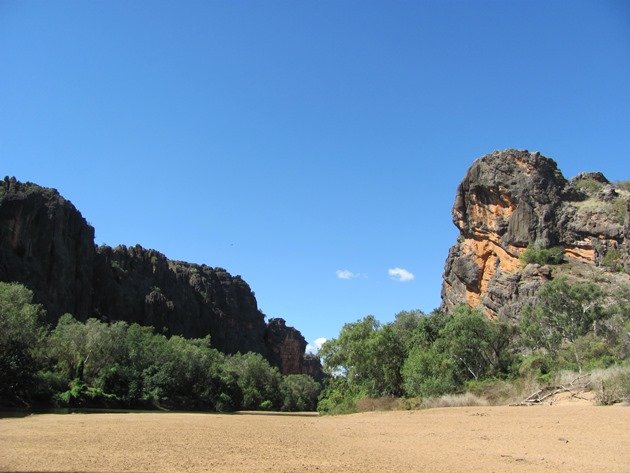
On our recent birding and camping trip we decided to head to Windjana Gorge due to the fact that it had been a long time since we paid a visit to this spectacular gorge. You can only access the gorge during our sunny and warm winter months and the road is well used and very corrugated. The gorge is part of the Napier Range and the rocks are part of the ancient Devonian reef system. The colours are spectacular and most people visit to see the “rocks and the crocs”!! Of course, we were also interested in the birdlife and did the whole of the trail, which is somewhat shortened this year after the Wet Season rains and erosion. It is still a three hour walk and there were very few people doing the entire trail, so the birds were relatively undisturbed.
You enter the trail through a gap in the rocks and you don’t need to go too far to see the remaining water and the spectacular rock formations.
Entrance to Windjana Gorge
Windjana Gorge
The trail is well marked using posts with wallaby footprints on plates. The trail is both through the shade along what would be the riverbank during the Wet Season and also in the actual riverbed, with options in some areas.
Trail marked in Windjana Gorge
The first sounds you hear as you enter the gorge are the screeching of Great Bowerbirds and the continuous calling of the Striated Pardalotes frantically looking for a mate. We were surprised to see relatively few Little Corellas in the trees, because on previous visits there had been large noisy flocks of the birds. They sat silently and most people didn’t even appear to notice them.
Pair of Little Corellas
As you go along the trail you are soon aware of the large numbers of freshwater crocodiles in the remaining water and on the banks. You can walk in the riverbed and it is advisable to remain at least 5 metres from the crocodiles following the National Park guidelines.
Freshwater crocodiles
Not everything in the gorge follows the guidelines and we observed several birds ignoring the rules and walking close to the crocodiles! There were Great Egrets, Little Black Cormorants and Pied Cormorants close to the crocodiles and one White-faced Heron was almost teasing the crocodile as it walked in front of it…..
White-faced Heron and crocodile
Several Black-fronted Dotterels were observed along the water’s edge and there were both Azure and Sacred Kingfishers diving from the nearby trees.
Black-fronted Dotterel
The trails were also being used by Peaceful Doves and Double-barred Finches as they searched for food. Double-barred Finches were the most common finch throughout the gorge and were as vocal as ever. We really are lucky that the majority of birds in Australia are vocal and it does make it easier to find them.
Double-barred Finches on the trail
There were also small groups of Little Woodswallows perched on branches throughout the gorge and their chocolate brown colour added to the surrounding environment.
Pair of Little Woodswallows
We came across several pairs of Banded Honeyeaters on our trip and I had almost given up on photographing them. They are lovely to observe and we rarely see them, so you tend to spend too much time looking at them and not photographing them. On top of that they like dense foliage, which is not very good for photographing them. However, we were lucky enough to have a pair land in the top of a Boab tree and I was able to photograph them before they dropped back into dense foliage again. We were not so lucky with the three Green-backed Gerygones and we failed to get them in a position where the green didn’t blend in with all the green of the foliage to enable us to photograph them.
Banded Honeyeaters
This is a spectacular gorge to visit for several hours and you are also able to camp outside the gorge itself in the National Park campsite. During our short visit we observed 45 bird species and it is also supposed to be a good place to observe various bats and mammals after dark.


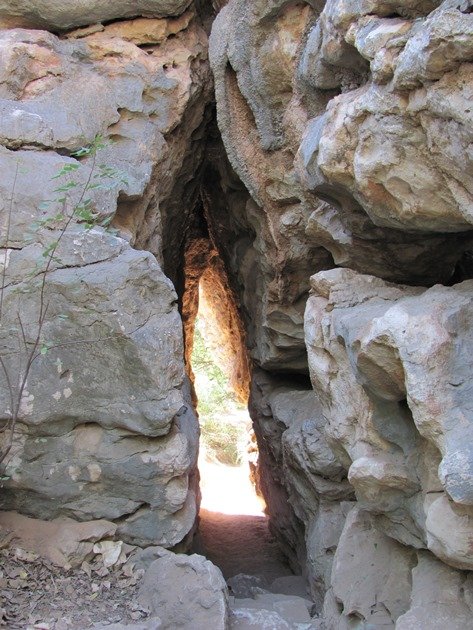
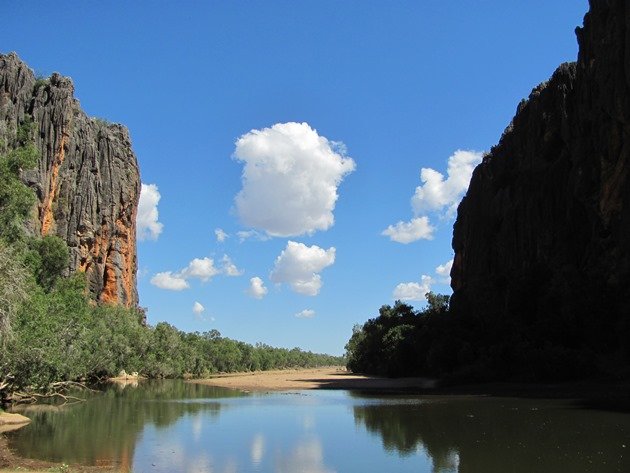
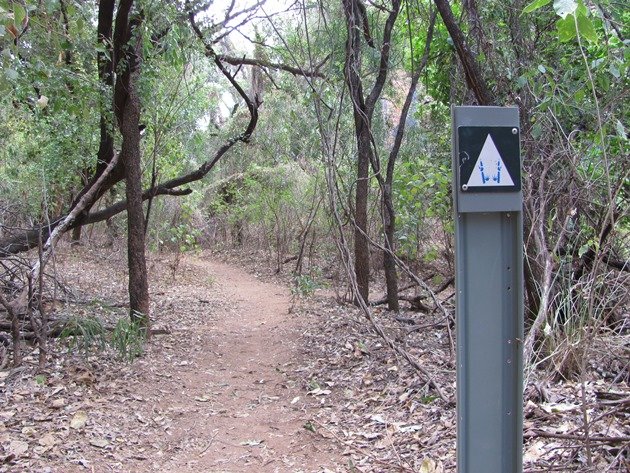
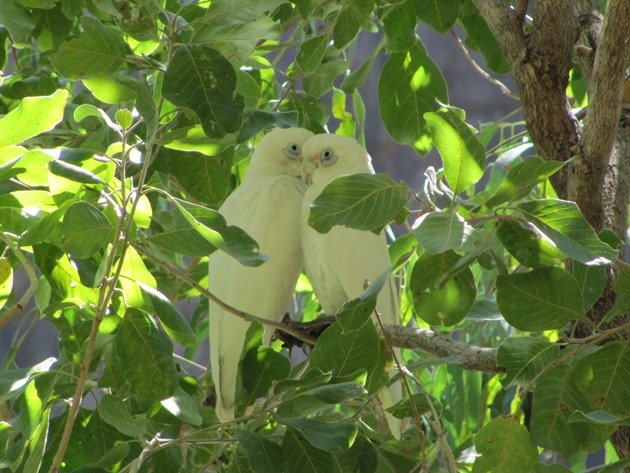
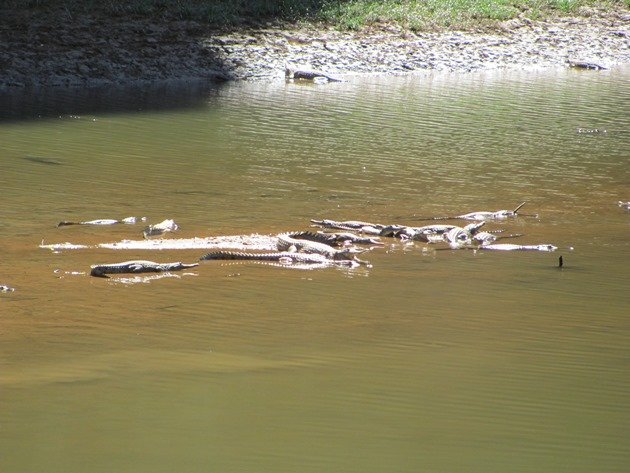
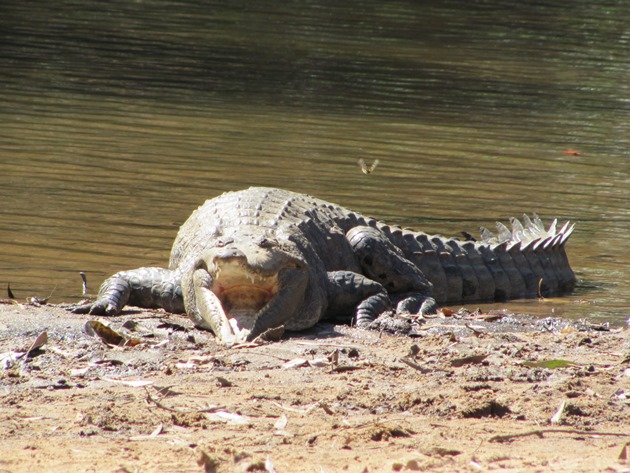
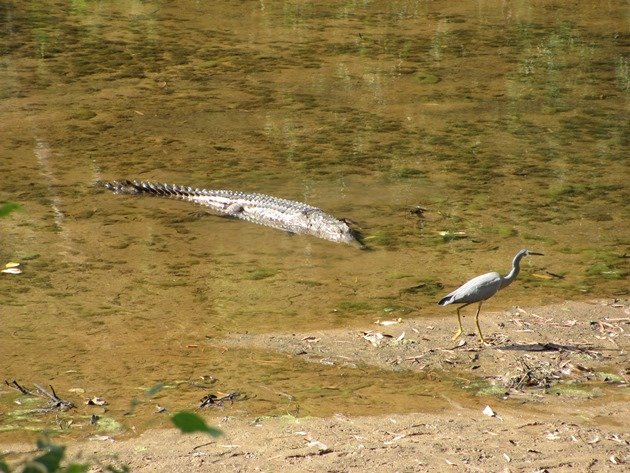
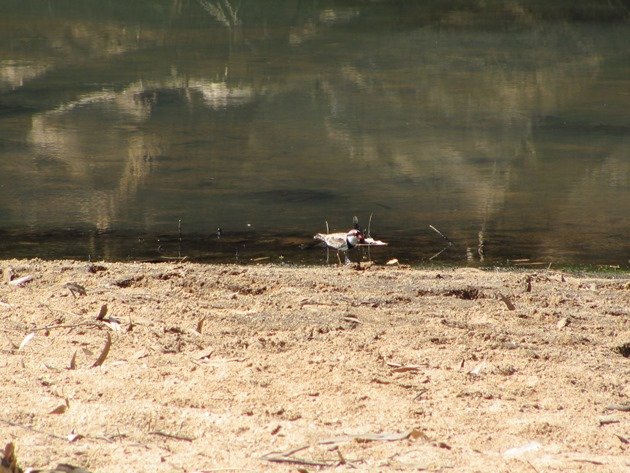
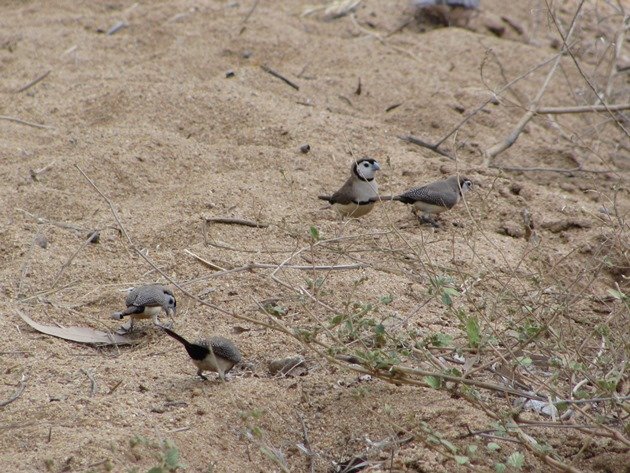
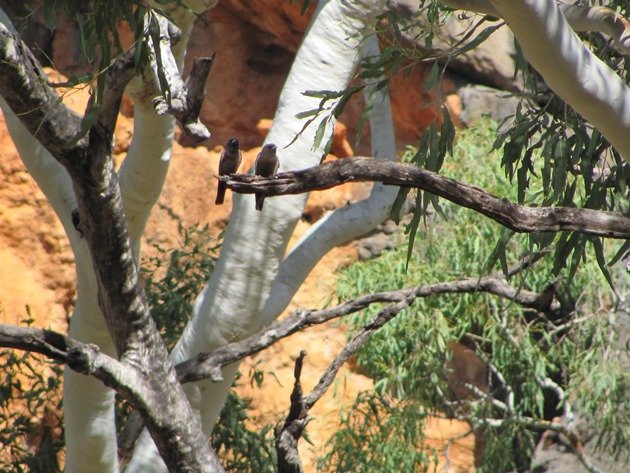
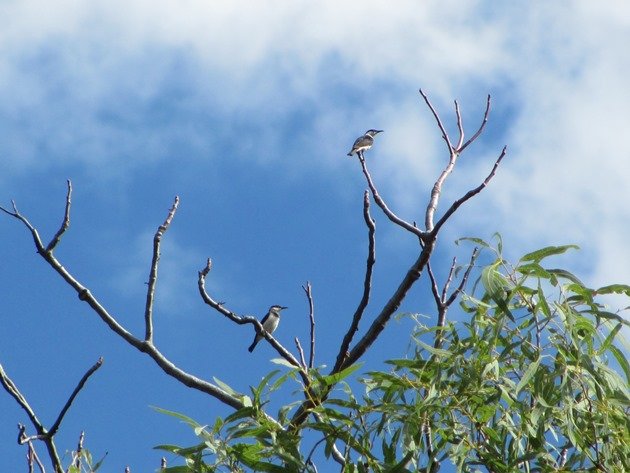











Lovely! Those are very chunky freshies. I’d be giving them some space too.
That heron is braver than I am!
Amazing scenery and gorgeous Little Corellas! I can’t believe the heron walked right in front of the crocodile!
What an amazing place!
Thanks everyone! Hardly the best road to get there, but worth it….you just need to allow time and be prepared to be a bit shook up when you get there! A few hours birding and you can face the road again. 🙂
Well, it sure is a beautiful post, but am I the only one who has noticed a recent decline in danger&death-related images and topics from you?
Okay, let me try: a warden has to sweep the path clean of leaves each day because the soaring ratio of death adder bite victims to unharmed visitors was starting to harm local tourism.
Sounds reasonable?
The fact that they don’t let you swim here nowadays has to say something! Maybe some Germans went missing! 🙂
The chunkyness of those freshies has to come from something, right? Or someone…
Maybe those White-faced Herons have established a feeding symbiosis with the freshies. The herons lure unsuspecting birders close to the water’s edge, and then …